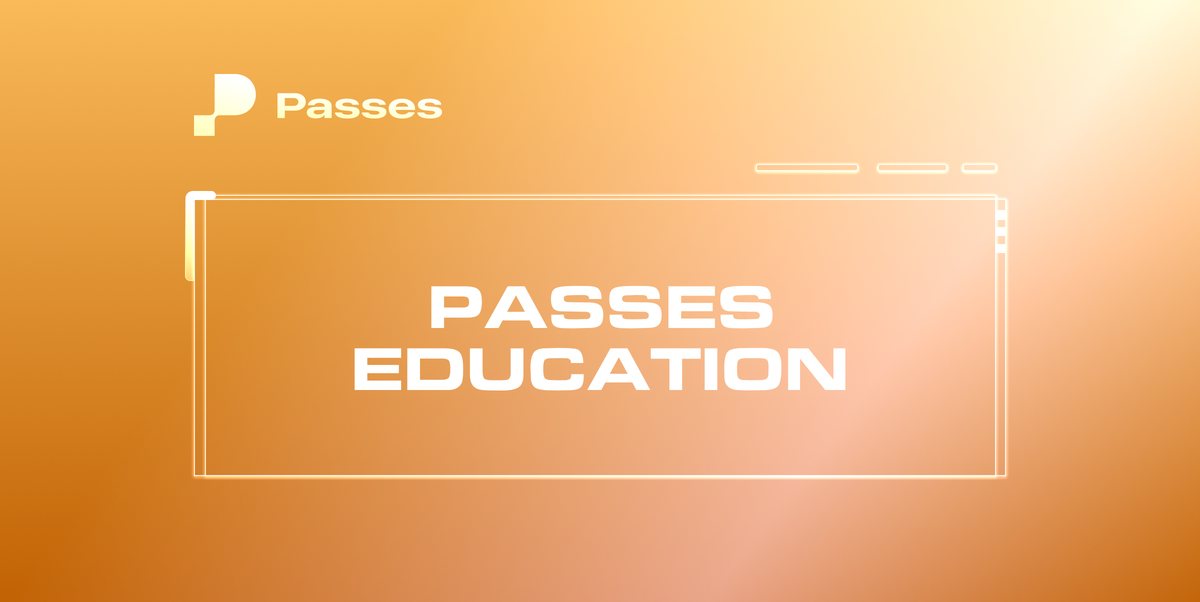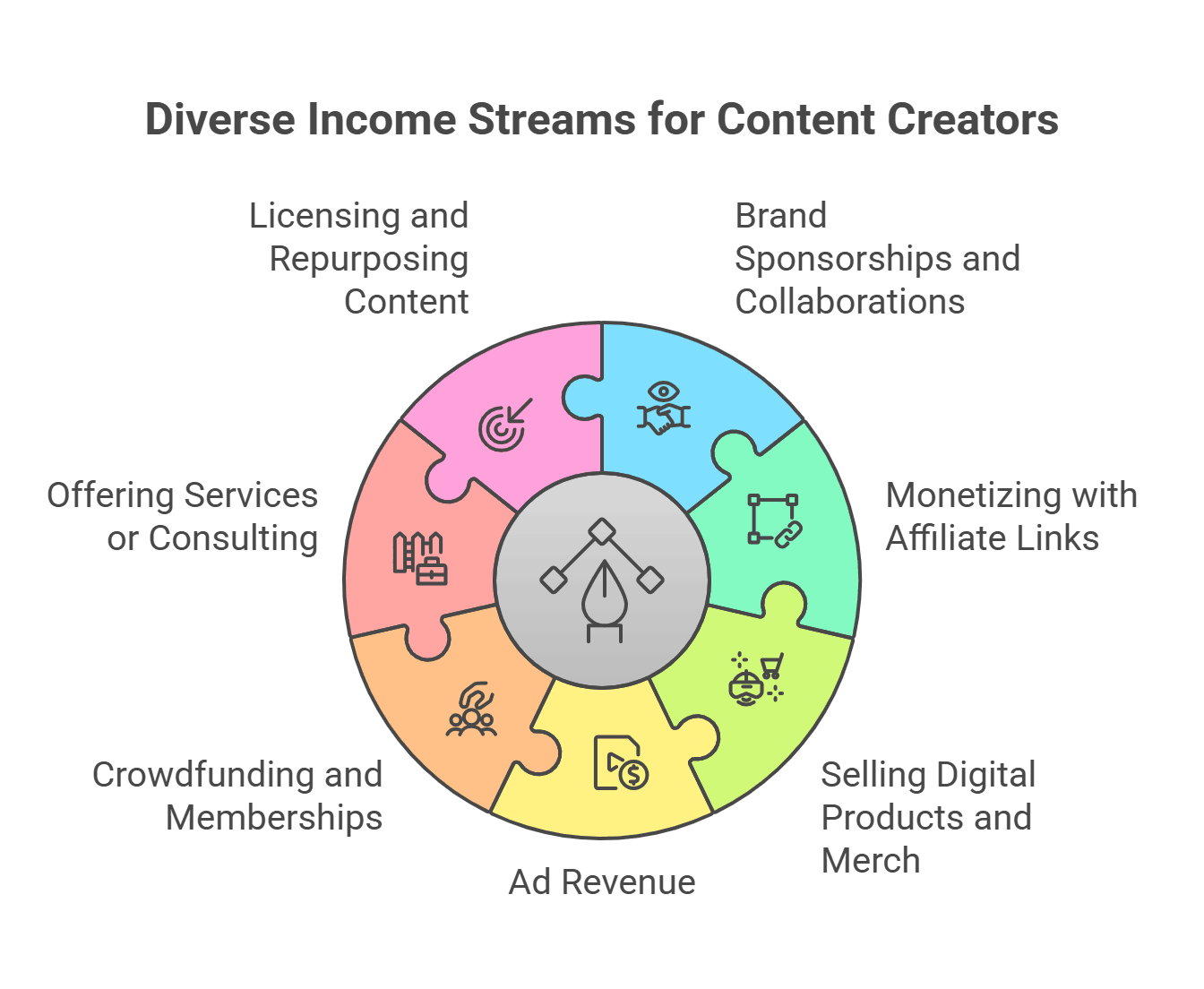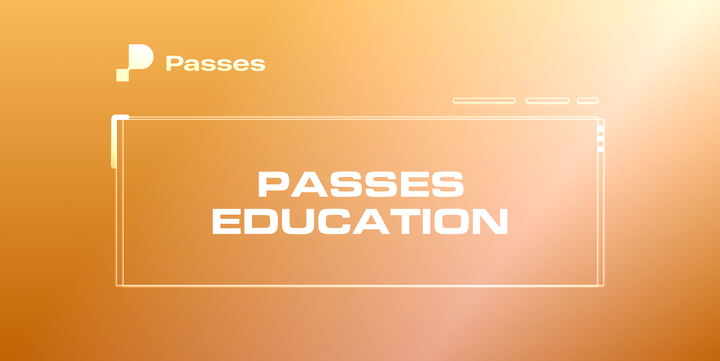How to Make Money as a Content Creator: What Actually Works

The creator economy presents uncommon opportunities for generating income directly from the audience. Building a sustainable revenue stream requires moving beyond unpredictable algorithms and embracing direct monetization strategies designed for entrepreneurial creators.
This guide provides a practical playbook for content creators aiming to transform their creative skills into a reliable income in 2025. It details proven methods and platform considerations to help you secure financial independence through your content.
7 Proven Ways to Make Money as a Content Creator
Today, content creators have more opportunities than ever to turn their passion into real income. With the right approach, you can build multiple revenue streams that not only grow your brand but also give you the financial stability to keep creating on your own terms.

Ready to start earning from your content? These 7 proven methods are a great place to begin.
1. Brand Sponsorships and Collaborations
You don’t need millions of followers to land brand deals!
You just need the right pitch and a clearly defined audience. Brands care about engagement and trust, not just vanity metrics. Even micro-creators with niche audiences are valuable when they can deliver targeted reach.
How to Land Brand Deals (Even with a Small Following):
- Define your niche + audience clearly - Know who you serve and what kind of content you create.
- Create a simple pitch deck or media kit - Include your bio, audience insights, sample content, and engagement stats.
- Reach out directly via email or DMs - Personalize your pitch and explain why your audience is a good fit for their product.
- Highlight your strengths - Showcase your creativity, content quality, and trust with your audience.
Common Sponsorship Deliverables:
- Branded posts or product mentions on Instagram, TikTok, or YouTube.
- Podcast ad reads; mid-roll or host-read integrations.
- Story takeovers, reviews, or unboxings
- Affiliate or performance-based partnerships; earn per sale or lead.
Pro tip: Start by pitching smaller or local brands in your niche. Build relationships, deliver great results, and use those collaborations to level up to bigger deals over time. It’s about value, not follower count.

2. Monetizing with Affiliate Links
Affiliate marketing is a simple yet powerful way to earn income by recommending products and tools. When someone makes a purchase through your unique affiliate link, you earn a commission with no extra cost to them.
How to Use Affiliate Tools Effectively:
- Choose products that align with your niche and that you genuinely use or trust. Relevance matters.
- Join affiliate programs like Amazon Associates, Impact, ShareASale, or niche-specific brand programs.
- Use tools like Pretty Links or Bitly to track and manage your affiliate URLs.
Where to Place Affiliate Links:
- In your YouTube descriptions, podcast show notes, or blog posts.
- As part of a "Resources I Use" page or a monthly favorites roundup.
- Embedded naturally within tutorials, reviews, or "how-to" content.
Build Trust + Stay Compliant:
- Always disclose that it’s an affiliate link. Your audience appreciates transparency, and it’s required by the FTC.
- Add a quick line like: “This post contains affiliate links, which means I may earn a small commission if you purchase through them - at no extra cost to you.”
When done right, affiliate marketing feels more like sharing a helpful recommendation than making a sale, and your audience will support you for it.
3. Selling Digital Products and Merch
Creating and selling your own digital products or merch is one of the most direct and scalable ways to monetize your content. It allows you to turn your expertise and brand into real, valuable assets that your audience can buy and use.
Digital Products You Can Sell:
- E-books or guides
- Online courses
- Templates & toolkits
Branded Merchandise:
- T-shirts, mugs, tote bags, or stickers with your logo, tagline, or inside jokes from your content.
- Use platforms like Printful or Teespring for print-on-demand fulfillment.
Steps to Launch Successfully:
- Identify what your audience actually wants; poll your followers or check DMs/comments.
- Create high-quality, niche-aligned products; solve a specific problem or reflect your brand.
- Choose the right platform; Gumroad, Payhip, Podia (for digital) or Shopify (for merch).
- Promote consistently; use your podcast, videos, email list, and socials to share the story behind the product.
- Add urgency or exclusivity; limited-time offers, first-access for subscribers, or bundled perks.
When your product aligns with your content and truly serves your audience, selling doesn’t feel like selling; it feels like giving your fans something they’ve been waiting for.
4. Ad Revenue from YouTube, Podcasts, or Blogs
Ad revenue is a great way to generate passive income once you’ve built a steady flow of content and a loyal audience. Whether you're a YouTuber, podcaster, or blogger, ads can be a consistent income stream, if you know how to set them up and optimize them.
YouTube
- Join the YouTube Partner Program once you hit 1,000 subscribers and 4,000 watch hours.
- Enable ads on your videos and earn through CPM (Cost Per Mille), meaning per 1,000 views.
- Focus on evergreen, high-retention content to maximize ad views over time.
Podcasts
- Use dynamic ad insertion through platforms like Spotify, Acast, or Megaphone.
- Join podcast ad networks or seek direct sponsorships for higher CPMs.
- Place ads strategically (pre-roll, mid-roll, or post-roll) to avoid disrupting listener experience.

Blogs
- Set up Google AdSense or premium networks like Mediavine or Ezoic.
- Place ads in high-traffic blog posts and ensure they are non-intrusive to user experience.
- Optimize for SEO to drive long-term organic traffic and consistent impressions.
Pro Tip: Ads won't make you rich overnight, but paired with consistent content and audience growth, they can become a steady, scalable revenue stream.
5. Crowdfunding and Memberships for Creators
Crowdfunding and memberships give your audience a chance to support your work directly, either through one-time contributions or ongoing subscriptions. It's not just about money - it’s about building a deeper connection with your community and giving them a reason to invest in your success.
One-Off Project Crowdfunding
For launching specific projects like a book, series, or event:
- Platforms: Kickstarter, Indiegogo, GoFundMe
- Best Use: Time-bound campaigns with clear goals and outcomes
- Tips:
- Tell a compelling story - why this project matters
- Offer tiered rewards (early access, shoutouts, exclusive merch)
- Set realistic goals and update your supporters regularly
Ongoing Membership Support
For continuous support and community-building:
- Platforms: Passes, Buy Me a Coffee, Ko-fi
- Best Use: Exclusive content, behind-the-scenes access, early releases
- Tips:
- Be transparent about how funds will be used
- Offer value at every tier (Q&As, bonus content, community chats)
- Celebrate your members often - make them feel part of your journey
When your audience understands why you’re creating and how they can help, they’re far more likely to support you - not just once, but for the long haul.
6. Offering Services or Consulting
One of the most effective ways to monetize your expertise is by selling your skills directly, through freelancing, coaching, or consulting. If you've built trust with your audience, many will look to you for personalized guidance or hands-on support. This is where your knowledge becomes both valuable and billable.
Here are a few real-world ways creators are doing it:
Freelancers:
- A graphic designer with a creative podcast takes on brand identity projects for small businesses.
- A video creator offers editing services to other content creators who want to level up their visual content.
Coaches & Consultants:
- A fitness influencer provides 1:1 coaching calls and customized meal/workout plans.
- A marketing podcaster offers strategy sessions to entrepreneurs struggling with visibility.
Course Creators:
- A productivity YouTuber creates a paid course on time management using the exact methods they talk about on their channel.
- A photographer runs a workshop series teaching mobile photo editing to beginners.
The best part? You don’t need millions of followers. You just need to be a few steps ahead of someone else in your niche. When you offer tailored help, your time and skills become a high-margin income stream, and you build deeper connections with your audience in the process.
7. Licensing and Repurposing Content
Your content doesn’t have to live in one place or serve one purpose. Licensing and repurposing allows you to make the most of what you’ve already created by adapting it for new platforms or letting others pay to use it.
Here’s how creators can put this into action:
Repurpose Your Content
Turn one piece of content into many by reformatting it for different channels:
- Turn podcast episodes into blog posts or newsletter content.
- Chop up long YouTube videos into short-form clips for TikTok, Reels, or Shorts.
- Use quotes, stats, or frameworks from your content as carousels or infographics for social media.
- Compile themed content into paid resources like e-books, toolkits, or mini-courses.
License Your Content
Let other brands or creators use your existing work - for a fee:
- License audio clips to media companies or advertisers.
- Allow publications to repost or reprint your blog posts or articles (with payment and credit).
- Sell usage rights to stock platforms (for photos, audio, video).
- License educational content to schools or training platforms.
Pro Tip: If you’re regularly creating high-quality content, you may already be sitting on a library of licensable assets. Monetize smarter by making every piece work harder in more places.
Creator Platform Monetization: Pros & Cons
Not all content platforms are created equal, especially when it comes to monetization. Each platform offers unique earning opportunities, but also comes with its own set of limitations that can impact how much control you have over your revenue.
Smart creators understand these differences and use that knowledge to make strategic decisions. Whether it’s YouTube, TikTok, Instagram, or a membership-based platform, choosing the right mix depends on your business goals, content style, and audience behavior. The more intentional you are with platform selection, the more freedom and stability you’ll have in how you earn.
Instagram is a powerful platform for visibility and brand building, especially for creators with strong visuals. But when it comes to direct monetization, your control is limited.
Pros:
- High visual exposure: Ideal for lifestyle, fashion, food, and design-focused creators
- Strong brand collaboration potential: Brands actively seek out creators for paid posts and stories
- Reels bonuses (when available): Occasional monetization incentives for short-form video content
Cons:
- Heavily algorithm-dependent: Your reach can fluctuate overnight, even with quality content
- Limited direct monetization tools: No built-in tipping or subscription models like other platforms
- No true ownership: You don’t control your audience data or access outside the app
Instagram is great for growth and partnerships, but not ideal if you’re looking to build a stable, creator-owned income stream. Use it to drive visibility, then guide your audience to platforms where you have more control.
TikTok: Viral Growth, Low Earnings Stability
TikTok is unmatched when it comes to viral potential and rapid audience growth, but turning that reach into steady income can be challenging.
Pros:
- Viral reach potential: Content can blow up fast, even for small accounts
- Live gifting: Earn direct support from fans during livestreams
- Creator Fund access: Get paid based on views (if eligible)
Cons:
- Low payouts: Creator Fund earnings are minimal, even on high-performing videos
- Inconsistent income: Virality is unpredictable, making revenue hard to rely on
- No built-in CRM tools: Difficult to manage or directly engage your audience long-term
TikTok is great for getting discovered, but creators looking for long-term income need to pair it with platforms that offer more stability and control.
YouTube: High Monetization Potential with High Barriers
YouTube offers some of the most robust monetization options for creators, but it also comes with steeper competition and entry requirements.
Pros:
- AdSense revenue: Earn from ads placed on your videos through the YouTube Partner Program
- Monetization for long-form content: Reliable income from evergreen videos with consistent views
- Fan support features: Super Thanks, channel memberships, and live Super Chats add extra revenue streams
Cons:
- High competition: Standing out requires consistent effort and quality production
- Strict eligibility thresholds: You need 1,000 subscribers and 4,000 watch hours to monetize
- Revenue sharing with YouTube: A percentage of your earnings goes to the platform
YouTube is ideal for creators focused on long-term, sustainable income, but be prepared to play the long game and invest in quality content to succeed.
Facebook: Diverse Tools, But Declining Organic Power
Facebook offers a variety of monetization features, especially for video creators, but its shrinking organic reach makes visibility a growing challenge.
Pros:
- Fan subscriptions: Offer monthly memberships with exclusive perks
- Ad revenue: Earn through in-stream ads in longer video content
- Stars: Viewers can send you virtual tips during live streams or video premieres
Cons:
- Declining organic reach: Posts and videos are less likely to be seen without paid promotion
- Monetization restrictions: Not all pages or content types qualify, and policies can be strict
Facebook can be a great revenue channel if you already have an engaged community, but it’s best used alongside platforms that offer more control and organic visibility.
Why Direct Monetization Matters More Than Ever
Platform-dependent earnings expose creators to sudden algorithm changes and policy updates on revenues. Direct monetization gives creators the basic right to retain control over earnings streams and connections with fans, stimulating authentic entrepreneurship.
Why Passes Is Built for Creator Income Control
Passes gives creators full control over how they earn, without relying on algorithms or ad networks. From subscriptions to exclusive content and digital product sales, it’s built for sustainable, direct monetization.
Passes vs. Major Platforms: A Quick Look
| Features | Snapchat | Passes |
|---|---|---|
| Commission Fees | Varies, often high on gifts/payouts | Low, transparent subscription fees |
| Content Ownership | Snapchat controls the platform and audience data | Creators own content and subscriber data |
| Audience Control | Algorithm-dependent reach | Direct connection with subscribers |
| Payout Stability | Variable, depends on views, trends, and eligibility | Predictable monthly income |
| Community Tools | Limited direct engagement tools | Built-in engagement features for creators |
How to Start Earning with Passes Today
You’ve built the content. Now it’s time to own the income. With Passes, you can turn your audience into paying supporters through subscriptions, exclusive content, and direct fan engagement - all on your terms.
Take control of your brand and your earnings. Sign up for Passes and start monetizing today!


